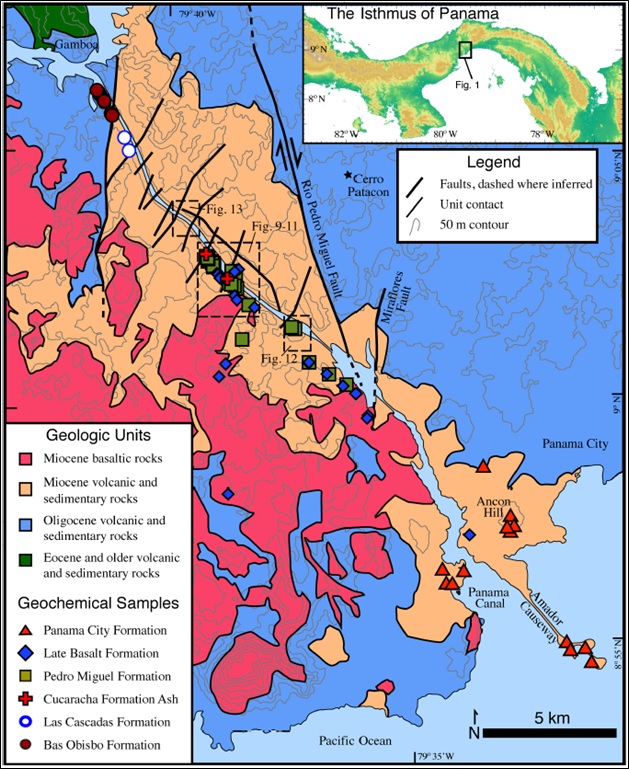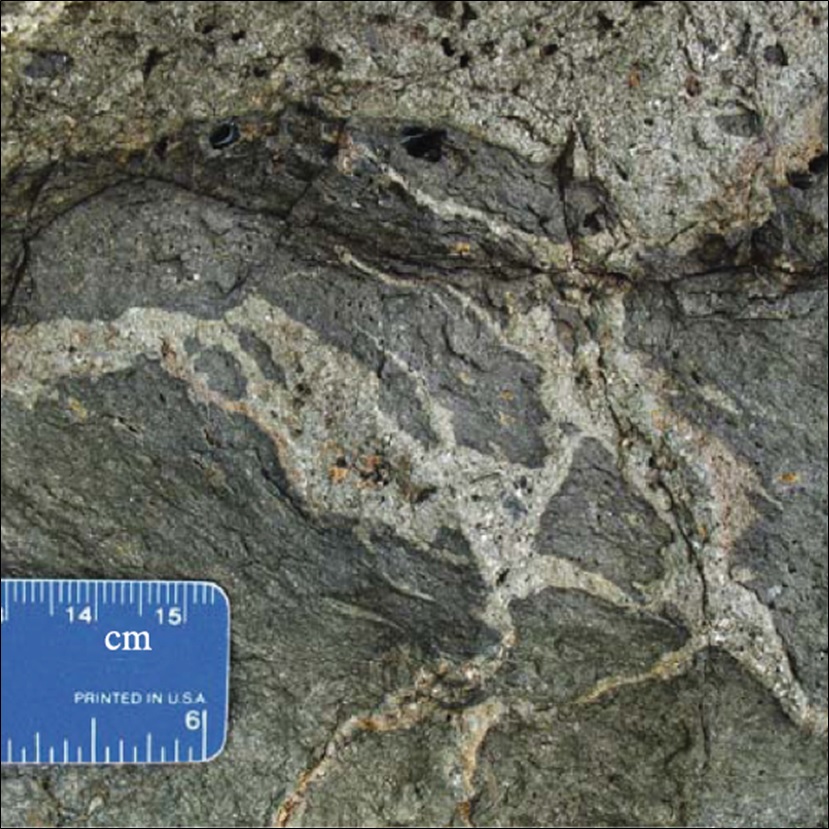Panama City Fm
Type Locality and Naming
Type Locality is at Ancon Hill in Panama City.
Synonym: N/A
Lithology and Thickness
The Panama City Fm is an informal name for a group of compositionally similar andesitic-dacitic plugs and lava flows located near the Pacific entrance to the Panama Canal (Figure 033). It is the southernmost Canal volcanic unit. Also, this formation is spatially associated with the Late Basalt Fm but lacks clear stratigraphic relationships with other volcanic units along the Panama Canal.
The largest volcanic body of the Panama City Fm is the Ancon Hill dacite. It forms the most topographically significant hill in Panama City and is composed almost entirely of a fine-grained porphyritic dacite/rhyolite. The Ancon Hill dacite contains euhedral phenocrysts of mostly plagioclase with minor potassium feldspar surrounded by a matrix of plagioclase microlites (Figure 118). The microlites are of moderate size and form a quasi-interlocking framework, but still have minor amounts of glass within interstial spaces. Also, present are eudedral to subhedral square phenocyrsts of opaque oxide minerals.
Other Panama City Fm volcanic rocks include a series of andesite/ dacite lava bodies that comprise the three islands at the end of the Amador Causeway, and an andesitic intrusive body near the western abutment of the Bridge of the Americas (Figure 033). The Amador Causeway bodies are intruded by 10+ m wide basaltic-andesite dikes, and well developed columnar andesites are present at this location. The Bridge of the Americas intrusion exhibits sharp near vertical contacts that truncate the host tuff and volcani-clastic sedimentary rocks. This intrusion also contains well-developed magma mingling structures with dacitic liquids locally injected into the dominant andesitic body (Figure 118). Farris et al. (2017)
Thickness: Not mentioned in Farris et al. (2017), however the altitude of Ancon Hill is 199 metres.
Figure 118. The intermingling of dacitic and andesitic magmas within a shallow intrusive body (Ancon Hill) of the Panama City Fm. Photo from Farris et al. (2017).
Relationships and Distribution
Lower contact
Upper contact
Regional extent
GeoJSON
Fossils
Age
Depositional setting
Additional Information
References: Stewart et al. (1980); Kirby et al. (2008); Farris et al. (2017);

